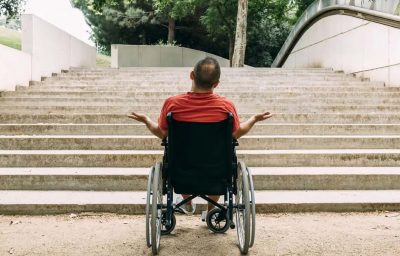
A tiny device the size of a small paperclip has been shown to help patients with upper limb paralysis to text, email and even shop online in the first human trial.
The device, Stentrode, has been implanted successfully in two patients, who both suffer from severe paralysis due to motor neuron disease (MND) – also known amyotrophic lateral sclerosis (ALS) – and neither had the ability to move their upper limbs.
Published in the Journal of NeuroInterventional Surgery, the results found the Stentrode was able to wirelessly restore the transmission of brain impulses out of the body. This enabled the patients to successfully complete daily tasks such as online banking, shopping and texting, which previously had not been available to them.
The Royal Melbourne Hospital’s Professor Peter Mitchell, Neurointervention Service Director and principal investigator on the trial, said the findings were promising and demonstrate the device can be safely implanted and used within the patients.
“This is the first time an operation of this kind has been done, so we couldn’t guarantee there wouldn’t be problems, but in both cases the surgery has gone better than we had hoped,” Professor Mitchell said.
Professor Mitchell implanted the device on the study participants through their blood vessels, next to the brain’s motor cortex, in a procedure involving a small ‘keyhole’ incision in the neck.
“The procedure isn’t easy, in each surgery there were differences depending on the patient’s anatomy, however in both cases the patients were able to leave the hospital only a few days later, which also demonstrates the quick recovery from the surgery,” Professor Mitchell said.
Neurointerventionalist and CEO of Synchron – the research commercial partner – Associate Professor Thomas Oxley, said this was a breakthrough moment for the field of brain-computer interfaces.
“We are excited to report that we have delivered a fully implantable, take home, wireless technology that does not require open brain surgery, which functions to restore freedoms for people with severe disability,” Associate Professor Oxley, who is also co-head of the Vascular Bionics Laboratory at the University of Melbourne, said.
The two patients used the Stentrode to control the computer-based operating system, in combination with an eye-tracker for cursor navigation. This meant they did not need a mouse or keyboard.
They also undertook machine learning-assisted training to control multiple mouse click actions, including zoom and left click. The first two patients achieved an average click accuracy of 92 per cent and 93 per cent, respectively, and typing speeds of 14 and 20 characters per minute with predictive text disabled.








